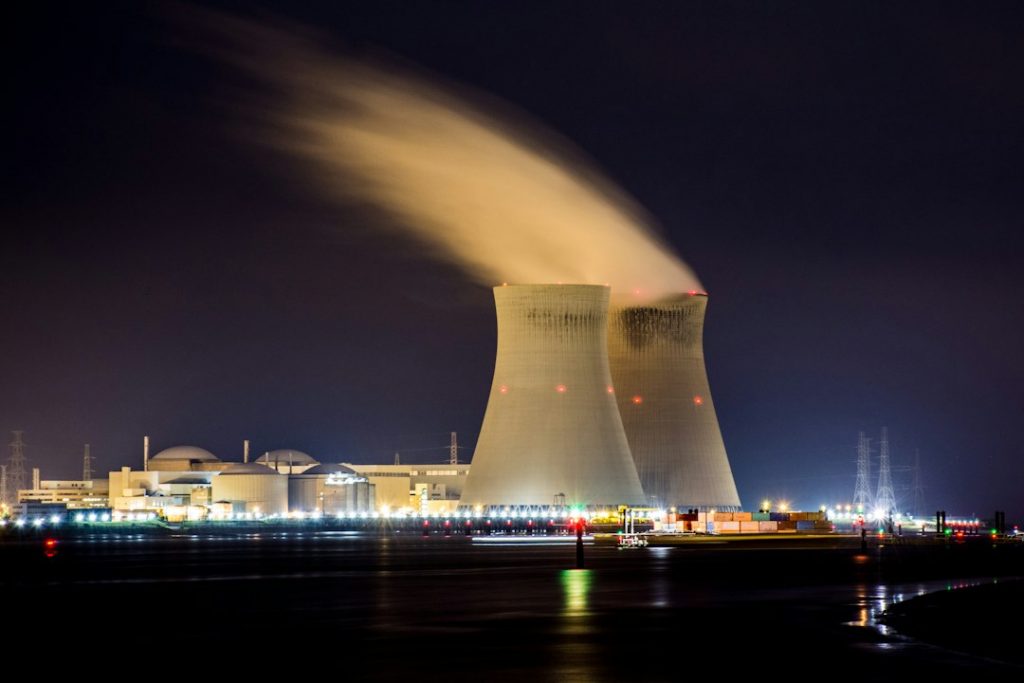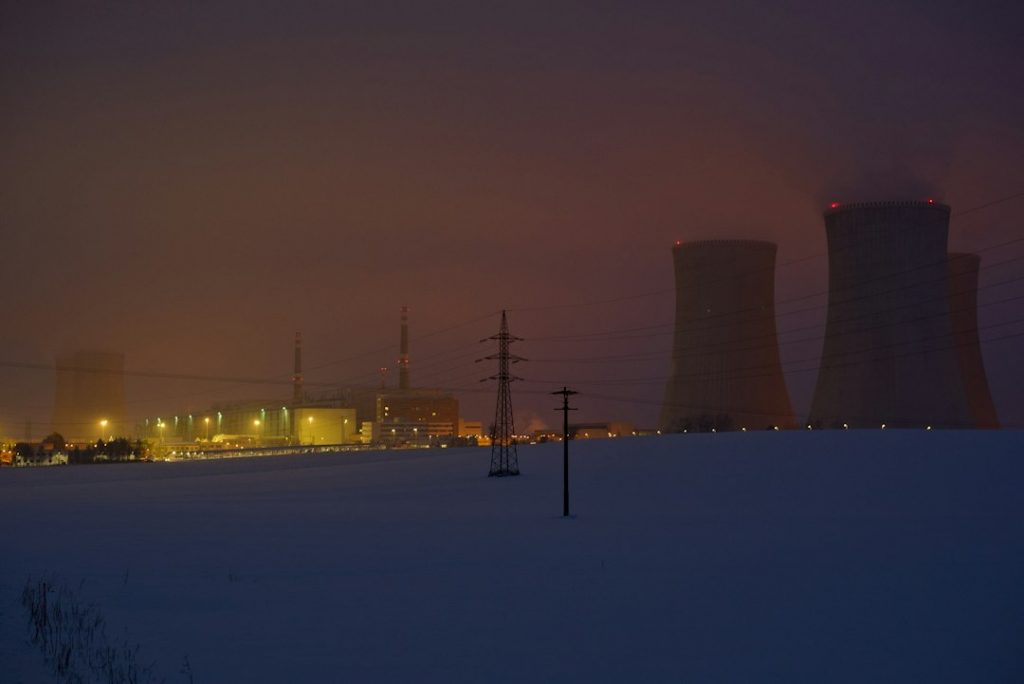Radioactivity and nuclear energy are topics that have gained significant attention in recent years. With the increasing demand for energy and the need to find sustainable and clean sources of power, understanding radioactivity and nuclear energy is crucial. This article aims to provide a comprehensive overview of the history of radioactivity, the dangers of radioactive exposure, the Fukushima disaster and its lessons, safety measures and regulations in nuclear power plants, challenges and solutions in radioactive waste management, the threat of nuclear proliferation, alternative energy sources, the role of science in understanding radioactivity, public perception of nuclear energy, and the future of nuclear energy.
Summary
- Radioactivity was discovered in the late 19th century by Marie and Pierre Curie.
- Exposure to radioactive materials can cause cancer, genetic mutations, and other health problems.
- The Fukushima disaster highlighted the importance of safety measures and regulations in nuclear power plants.
- Radioactive waste management remains a major challenge, with no perfect solution yet.
- Nuclear weapons pose a significant threat to global security and stability.
The History of Radioactivity: From Discovery to Nuclear Energy
The discovery of radioactivity can be attributed to several scientists, including Henri Becquerel, Marie Curie, and Ernest Rutherford. In 1896, Becquerel accidentally discovered that uranium salts emitted rays that could penetrate opaque materials. This discovery led to further research by Marie Curie, who coined the term “radioactivity” and identified two new elements, polonium and radium. Ernest Rutherford later conducted experiments that led to the discovery of alpha and beta particles.
Early uses of radioactive materials included medical applications such as cancer treatment and diagnostic imaging. However, it was not until the 20th century that the potential for harnessing nuclear energy was realized. In 1938, Otto Hahn and Fritz Strassmann discovered nuclear fission, which is the splitting of an atomic nucleus into two smaller nuclei. This discovery paved the way for the development of nuclear reactors and the generation of electricity through nuclear power.
The Dangers of Radioactive Exposure: Health Risks and Environmental Impact
Exposure to radiation poses significant health risks. The effects of radiation exposure can range from mild symptoms such as nausea and fatigue to more severe conditions such as cancer and genetic mutations. The extent of these health risks depends on factors such as the type of radiation, the dose received, and the duration of exposure.
In addition to the health risks, nuclear accidents can have severe environmental impacts. The release of radioactive materials into the environment can contaminate air, water, and soil, leading to long-term ecological damage. The most well-known examples of nuclear disasters include the Chernobyl disaster in 1986 and the Fukushima disaster in 2011.
The Fukushima Disaster: Lessons Learned from a Nuclear Meltdown
| Lesson Learned | Description |
|---|---|
| Emergency Preparedness | Importance of having a comprehensive emergency plan in place to respond to nuclear disasters. |
| Human Error | Human error can lead to catastrophic consequences and it is important to have strict safety protocols in place. |
| Regulatory Oversight | The need for strong regulatory oversight to ensure that nuclear power plants are operating safely and in compliance with regulations. |
| Public Communication | The importance of clear and transparent communication with the public during a nuclear disaster to avoid panic and misinformation. |
| Environmental Impact | The long-term environmental impact of a nuclear disaster and the need for ongoing monitoring and remediation efforts. |
The Fukushima disaster occurred on March 11, 2011, when a massive earthquake and tsunami struck the Fukushima Daiichi Nuclear Power Plant in Japan. The resulting damage to the plant led to a nuclear meltdown and the release of radioactive materials into the environment. This disaster highlighted the importance of safety measures and emergency preparedness in nuclear power plants.
One of the key lessons learned from the Fukushima disaster was the need for improved safety regulations and procedures. Following the disaster, there were significant changes made to safety regulations in nuclear power plants worldwide. These changes included improvements in plant design, emergency response plans, and training for plant operators.
Nuclear Power Plants: Safety Measures and Regulations
Nuclear power plants have numerous safety measures in place to prevent accidents and minimize the impact of any potential incidents. These measures include multiple layers of containment structures, redundant safety systems, and rigorous training for plant operators.
In addition to these safety measures, nuclear power plants are subject to strict regulations and oversight by regulatory bodies such as the International Atomic Energy Agency (IAEA) and national regulatory agencies. These regulations cover all aspects of plant operation, including design, construction, operation, and decommissioning.
There have been several successful examples of safety measures in nuclear power plants. For instance, the Three Mile Island accident in 1979 led to significant improvements in safety systems and procedures. As a result, there have been no major accidents in commercial nuclear power plants in the United States since then.
Radioactive Waste Management: Challenges and Solutions

One of the major challenges associated with nuclear energy is the management of radioactive waste. Radioactive waste can remain hazardous for thousands of years, and finding safe and secure methods of disposal is crucial.
Current solutions for radioactive waste management include storage in specially designed facilities such as deep geological repositories. These repositories are located deep underground and provide a stable and secure environment for the long-term storage of radioactive waste. However, there are still challenges associated with the transportation and disposal of radioactive waste, as well as concerns about the potential for leakage or accidents.
Future developments in waste management include research into advanced reprocessing technologies that can reduce the volume and toxicity of radioactive waste. Additionally, there is ongoing research into the use of nuclear waste as a fuel source for advanced reactors, which could help to reduce the amount of waste generated by nuclear power plants.
Nuclear Weapons: The Threat of Nuclear Proliferation
Nuclear weapons pose a significant threat to global security. The destructive power of nuclear weapons is unparalleled, and their use could have catastrophic consequences. The threat of nuclear proliferation, or the spread of nuclear weapons to additional countries, further increases the risk of nuclear conflict.
International efforts to prevent nuclear proliferation include treaties such as the Treaty on the Non-Proliferation of Nuclear Weapons (NPT), which aims to prevent the spread of nuclear weapons and promote disarmament. The NPT has been signed by 191 countries and has played a crucial role in limiting the number of countries with nuclear weapons.
However, there are still concerns about countries that have not signed the NPT or have withdrawn from it, as well as the potential for non-state actors to acquire nuclear weapons. Continued efforts are needed to strengthen international non-proliferation efforts and ensure that nuclear weapons do not fall into the wrong hands.
Alternative Energy Sources: Can We Move Away from Nuclear Power?
While nuclear power has its benefits, including low greenhouse gas emissions and a high energy density, there are also concerns about its safety, waste management, and the potential for nuclear accidents. As a result, there is increasing interest in alternative energy sources that can provide clean and sustainable power.
Alternative energy sources include renewable sources such as solar, wind, and hydroelectric power, as well as emerging technologies such as tidal and geothermal power. These sources have their own advantages and disadvantages, and a combination of different energy sources may be needed to meet the world’s energy needs.
The possibility of moving away from nuclear power depends on several factors, including the availability and cost-effectiveness of alternative energy sources, advancements in energy storage technologies, and public perception and acceptance of these sources. While it may not be possible to completely eliminate nuclear power in the near future, a gradual transition towards alternative energy sources is feasible.
The Role of Science in Understanding Radioactivity and its Effects
Scientific research plays a crucial role in understanding radioactivity and its effects on human health and the environment. Researchers study the properties of radioactive materials, the mechanisms of radiation exposure, and the biological effects of radiation.
Current research on the effects of radiation exposure includes studies on cancer risks, genetic mutations, and long-term health effects. This research helps to inform safety regulations and guidelines for radiation protection.
Future directions for research include advancements in radiation detection technologies, improved understanding of the biological effects of low-dose radiation, and the development of new treatments for radiation-related illnesses. Continued scientific research is essential for ensuring the safe use of nuclear energy and protecting human health.
Public Perception of Nuclear Energy: Trust, Fear and Misinformation
Public perception of nuclear energy is influenced by various factors, including media coverage, personal experiences, and cultural beliefs. While some people view nuclear energy as a clean and reliable source of power, others have concerns about its safety and the potential for accidents.
One of the challenges in public perception of nuclear energy is the presence of misinformation and fear. The media often focuses on negative aspects of nuclear energy, such as accidents and waste disposal, which can contribute to public fear and mistrust. Addressing misinformation and building trust through transparent communication and education is crucial for fostering a more balanced and informed public perception of nuclear energy.
The Future of Nuclear Energy: Balancing Benefits and Risks
The future of nuclear energy lies in finding a balance between its benefits and risks. Nuclear energy has the potential to provide a significant amount of clean and reliable power, but it also comes with inherent risks such as the potential for accidents and the management of radioactive waste.
Future developments in nuclear energy include advancements in reactor design, such as small modular reactors and advanced fast reactors, which can improve safety, efficiency, and waste management. Additionally, research into fusion energy, which aims to replicate the process that powers the sun, could provide a virtually limitless source of clean energy.
In conclusion, understanding radioactivity and nuclear energy is crucial for addressing the world’s energy needs while minimizing the risks associated with nuclear power. The history of radioactivity, the dangers of radioactive exposure, the Fukushima disaster, safety measures and regulations in nuclear power plants, radioactive waste management, the threat of nuclear proliferation, alternative energy sources, the role of science in understanding radioactivity, public perception of nuclear energy, and the future of nuclear energy are all important aspects that need to be considered. Continued discussion and research on these topics are essential for making informed decisions about the future of nuclear energy.
FAQs
What is radioactivity?
Radioactivity is the process by which unstable atomic nuclei emit particles or electromagnetic waves. This emission is known as radiation.
What are the types of radiation?
There are three types of radiation: alpha particles, beta particles, and gamma rays. Alpha particles are made up of two protons and two neutrons, beta particles are high-energy electrons, and gamma rays are high-energy photons.
What are the sources of radioactivity?
Radioactivity can occur naturally in the environment, such as in rocks and soil, or it can be man-made, such as in nuclear power plants and nuclear weapons.
What are the effects of radioactivity on human health?
Exposure to high levels of radiation can cause damage to cells and tissues, leading to radiation sickness, cancer, and even death. However, low levels of radiation exposure are generally not harmful.
How is radioactivity measured?
Radioactivity is measured in units of becquerels (Bq) or curies (Ci). One becquerel is equal to one radioactive decay per second, while one curie is equal to 3.7 x 10^10 radioactive decays per second.
What is nuclear fission?
Nuclear fission is the process by which the nucleus of an atom is split into two or more smaller nuclei, releasing a large amount of energy in the process. This process is used in nuclear power plants to generate electricity.
What is nuclear fusion?
Nuclear fusion is the process by which two or more atomic nuclei come together to form a larger nucleus, releasing a large amount of energy in the process. This process is the source of energy in stars.


